Toimialayhteisöt
This document specifies requirements and provides guidance for a management system for educational organizations (EOMS) when such an organization: All requirements of this document are generic and intended to be applicable to any educational organization that uses a curriculum to support the development of competence through teaching, learning, training or research, regardless of the type, size or method of delivery. This document can be applied to educational organizations within larger organizations whose core business is not education, such as professional training departments. This document also provides guidance for the use of a EOMS. This document does not apply to organizations that only produce or manufacture educational products.
--------------------------------------
SFS:n tehtävänä on ylläpitää suomalaista SFS-standardikokoelmaa. Maailmanlaajuisten standardien kohdalla ISO vahvistaa standardin ensin, ja Suomi päättää sen jälkeen, vahvistaako se standardin vai ei. Vahvistamispäätökseen vaikuttaa alan suomalainen näkemys ja kiinnostus vahvistettavaan standardiin.
HUOM: SFS esittää tätä standardia SFS-ISO vahvistettavaksi. Vastaa kohdassa ’Ota kantaa’ tulisiko tämä ISO-standardi vahvistaa kansalliseksi SFS-ISO-standardiksi
